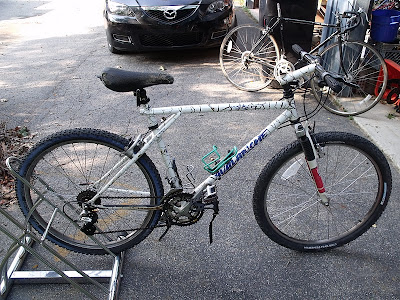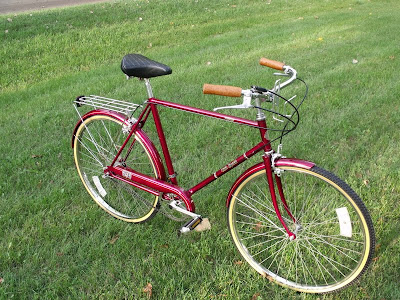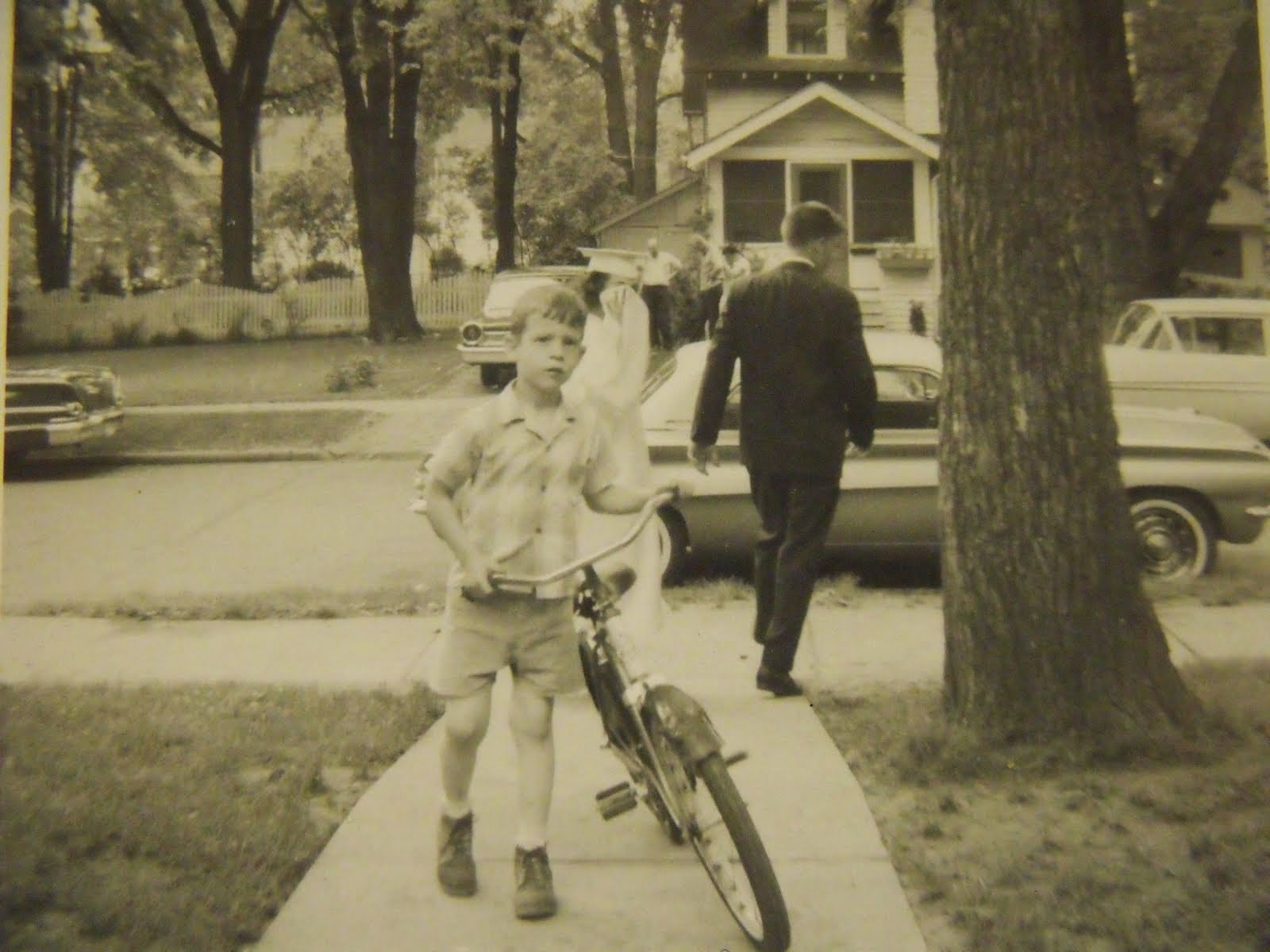Hello and Welcome, I`m not going to mention that Hugh`s Bicycle Blog now has a Face-Book page. And I`m not going to mention that the quick-link is right there in the right column. Having not said that, Let me tell you about the Zefal make-over the GT Avalanche recieved, and why. I was at the local Meijer Store the other day and I spotted a Zefal saddle. I noticed it came with a bracket for a wedge bag. Then I spotted the Zefal wedge bag that fits the saddle. I`m already a big fan of the Zefal water-bottle cages for both style and value. As I looked around I saw a few other Zefal products. That is when I decided to do the full Zefal treatment on the GT.
Below: Some of the Zefal products I will be installing. From left to right. The Zefal light-set, under 20.00 (non rechargeable batteries included). The Zefal Comfort Saddle, under 18.00 (including wedge bag bracket). The Zefal water-bottle cages (under 8.00 each). The Zefal Wedge Bag about 10.00 (designed to attach to the saddle, right out of the box). The Wedge Bag also includes a sewn-on strip to hang the tail-light on. And Not Shown. I also purchased a Zefal mini frame-mount pump for under 15.00
Below: The Zefal comfort saddle is quite comfortable. Although wide in the the rear, the nose is narrow enough not to be bothersome. And it`s a good looking saddle as well. As you see the wedge bag is clipped on and the tail light is hung onto the strap.
Below: The Zefal wedge-Bag is just that easy to remove. You will want to make sure you feel it click into place when re-attaching it to the bracket. While the bag is not expandable, I have loaded it with a full patch kit (including multi-tool flat bar) a replacement tube and three Allen wrenches. And with the frame-mounted mini-pump, I should have everything I need to fix a flat.
Below: The Zefal front light has three settings, constant on - fast flashing and slower flash. I do not ride in the dark. But as a "be seen" light it works great. A few friends who have seen me out riding have already mentioned that is is a great attention getter. (I have the same light-set on my daily rider) Also it is easily removed and can be used as a flashlight or emergency signal light. In a cold climate you will want to bring the lights inside with you. That is no big deal as the front and rear lights both remove easily. The tail-light has the same three settings as well.
Below: The stylish Zefal water-bottle cages. As more mountain bikers are using the hydration packs these days, maybe cages are not "as necessary" as they once were. But for a short ride they are still very handy. And not everyone (including me) owns or uses a hydration pack. And a "Big Plus" for me, My favorite size Gatorade bottle fits the Zefal cage perfectly. Also Below: The Zefal frame-mount mini-pump. The included Velcro strap is for bikes that do not have the bottle-cage mount holes. I used it anyway for "extra" security. I have not used the pump so I won`t comment on the performance. But I will say this, Zefal has been making frame pumps for a very long time. I have no doubt that "although not as quickly as a full size frame pump" it will do the job more than adequately.
Below: The Bell removable mud-guard. The GT frame is a perfect match for this 5.00 add-on. The set is 10.00 But since I used the front guard on the GIANT, we will call it a 5.00 investment. And because of the triple triangle frame`s design that exposes seat tube just above the rear tire, the mud-guard fits this bike better than any other I have seen. That is one sweet mud guard for five bucks!
Below: The GT with all the Zefal accessories, including the "Bell" mud-guard. You are looking at an investment of about $83.00 US + tax. I know these are not "Top of the Line" accessories. But for the casual rider or someone who is on a tight budget.. They are the most "Bang for you Buck" that you are likely find anywhere.
Below: The Giant Attraction is now sporting a new Avenir rack and the Bell 5.00 front mud-guard. This bike has been a joy to test-ride. I`m gonna miss this one when she is gone. I think the only thing I would do differently if I were starting this build tomorrow.. Is go with a higher pressure tire. These max-out at 35 lbs psi. Although I could probably sneak a few extra pounds in there. But next time it is going to be Kenda for sure! Oh wait, The GT was next time! And it has the Kenda Kross Plus which I think hold at least another 20lbs psi. That was a good choice, and they were on sale too!
Below: The Motobecane Nomade is coming along fine. I should start posting the restoration real soon. It has been great working on a vintage road bike again. I have more experience with these, so it is less challenging and also a lot less stressful. So I might slip in a few more road bikes before working on the Specialized Rock Hopper FA.
Until Next Time Please RIDE SAFE and Remember to Always RESCUE, RESTORE & RECYCLE
Cheers, Hugh
Outdoor Ventures Packable Jacket Review
2 weeks ago

































































